Next year is shaping up to be a very strong year for M&A activity in the Knowledge Economy. In order to assist your preparation for 2021, take a look at our M&A Preview, in which we discuss the following eight key trends:
- The adoption of digital is accelerating
- Emerging technologies are being commercialised rapidly
- There is a convergence across the sector and delivery models are blending
- Private equity participation in the knowledge economy is increasing
- Next-generation technology platforms are emerging
- Vertical software solutions are playing an increasing role
- Buyers are returning to nearshore locations for access to new skills
- Shareholders are aligning expectations and addressing structural risks
Buyer Evaluation
Key commercial business drivers that buyers will evaluate when buying your business.
How does a buyer place a value on knowledge-based ‘people businesses’ which in the main provide people reliant services, with booked revenues rarely extending beyond a few months? A typical question surrounding the valuation of knowledge economy businesses is “If I buy your firm today, then you and all your people leave tomorrow with all their knowledge and client relationships … what’s left other than the existing contracted revenues?”. The answer is ‘not much’ unless you’ve de-risked the future, in which case, like so many of your peers who’ve gone on to sell their firms, you can command a valuation above the industry average and well into the premium value zone. We consider in this article what distinguishes low risk, high value firms from the rest.
Whatever your business model, whether it’s pure consulting, or consulting-led product, project, managed, staffing, or outsourced services, the likelihood is that there is limited tangible value to be found in your P&L or balance sheet. If there is, then it is almost certainly not representative of the true, full value of your business. It’s the inclusion of the intangible assets that provide this value and they can’t be found in any financial statement. If you have 3 years of consistent growth behind you, plus a 3-month order book, then this is a good start. But it’s not enough. The only way a buyer is going to dig deep into his pockets is if he has unfettered confidence and he truly believes that the next 3 years provide almost guaranteed growth.
Firms that inspire this confidence can provide evidence and validation that the last 3 years has been growth by design, as opposed to luck and serendipity. Furthermore, they can clearly demonstrate sustainability of this growth into the future, not just by extrapolating the line on the growth chart, but by extrapolating the business drivers already in place that will make this happen. These drivers can’t easily be manufactured out of thin air when you come to sell your business. To become ‘sale ready’ it is advisable to start now and run your business as if it’s for sale at all times, by getting these drivers in place now, you not only de-risk your growth leading up to a sale, but way beyond in the mind’s eye of the buyer.
These 7 drivers form a story you can tell that will convince a buyer about the quality of your firm as an investment risk.
- We know exactly who our strategic markets and clients are
- Here’s the rate of penetration to date and white space we can fill
- This is our database of decision makers and rate of relationship growth
- Here’s how our UVP is growing our average engagement size
- This is our growth and retention rate by strategic client
- Look at our historic and future scale plan into adjacent spaces
- Look at our historic forecast accuracy
Let’s look at each piece of the story in a little more detail by posing the key question to answer, what good looks like, and what that means to a buyer.
1. We know exactly who our strategic clients are
Do you know the ideal profile of the companies in your target market(s) where you have the greatest right to win against the competition, or are you less focused and will respond with hunger to any prospect that wants or needs your services?
Because you are laser focused, your win rates and engagement fees have increased. This happened because you are concentrated with your business development resources and built potency into your value proposition.
Your buyer can then get excited about your focus, how he can take you and your IP into his clients that look the same, leverage your capabilities and increase fee income per client.
2. Here’s the rate of penetration to date and space we can fill
Have you built and maintained a database of current and potential strategic clients covering the entire addressable market, or do you pick them off one by one?
Because you have a complete dataset of companies that form your current and future clients, you have progressively sold into new clients and sold on in a disciplined way, with supporting historic data. For your buyer, your knowledge of target market size and current penetration will demonstrate how you’ve scaled so far by design. He can see year by year penetration rates, win rates and how that’s improved. He can also understand the white space left to fill into the future.
3. This is our database of decision makers and relationship growth
Alongside your company database, have you researched and populated it with a dataset of contacts comprising the decision makers and influencers in each target client?
With this data, you are running your relationship development programme to both retain existing clients and generating demand from new ones. By moving contacts up the relationship curve from unqualified to meetings and short/medium/long term prospects, you are bolstering your long-term forward pipeline.
A buyer will be able to take this data and understand how you have sold to and grown accounts. He will see that not only have you acquired great strategic clients, but you have both the data and relationships to continue the momentum.
4. Here’s how our UVP is growing our average engagement size
Are you selling warm bodies to do a job, or a Unique Value Proposition that appeals to decision makers with big business problems and deep pockets?
Armed with a compelling UVP you are selling against financial benefits and valuable outcomes as opposed to competing on day rates. Because this delivers results to the most senior people in your clients with the biggest business challenges, they are willing to use their deep pockets to pay you well.
Your buyer will be able to see how you’ve grown your UVP over time, resulting in very attractive engagement sizes he wants to replicate across the globe. In all likelihood, there will be buyers in the top tier of your sector that you regularly beat in bids, thus increasing their appetite to get access to what you’ve got.
5. This is our growth and retention rate by strategic client
Are your engagements very short and you have to constantly seek new business in new clients to keep the boat afloat, or are you very sticky to your clients, relationships last a long time and lifetime fee income per client is growing?
Once you get a foot in the door of a client you stay there a long time, know how to use it as a platform to sell-on and sell-across into white space within the enterprise. While you don’t necessarily have contracted agreements going out into the future, you do have a very reliable retention record.
In an ideal world it would be a great asset to show 3-year contracted business to buyers, however in the real world the next best thing is to show client sell-on growth and long-term retention rates. Buyers of knowledge economy firms treat this as a proxy for contracted business and recurring revenues, suitably discounted, but still a big asset.
6. Look at our historic and future scale plan into adjacent spaces
Does your service/market matrix look like a random heat map and you dilute your focus and resources in a multi-sector, multi-disciplinary way, or have you moved from cell to cell in the matrix, by filling only the adjacent spaces symbiotically from your core?
You know your target market and fill all the white space available before diluting your focus into a new area. When you do so, it is well planned and timely. You only do it when it is additive to the core, as opposed to the extreme of a new service in a new market.
When the buyer sees this picture, he can see not only the quality of your strategy, but also salivate over the blank canvas of white space to fill, once his brand and coverage is added to your capabilities.
7. Look at our historic forecast accuracy
Is your 12-month revenue forecast wishful thinking and finger in the air, or has it been honed over time into a reliable view of reality, with a margin of error to +\- 20%?
Over the last 3 years you can show forecast against actual and demonstrable improvement over time. This allows you to plan your budgets and resources in a controlled and reliable way.
When you present your business to a buyer, no matter how well you’ve performed historically, he will treat your forecast with extreme caution. However, when you show him the forecast data alongside all the imperatives above, his belief in the future will soar.
Key Takeaways
The only way a buyer will gamble on a high-risk firm is if he mitigates his risk by paying a very low price up front and/or an earn-out highly contingent upon future results.
On the other hand, he will pay a premium for a firm that looks like a rock-solid financial risk, irrespective of synergy value, which will drive the price up even further, increase the up-front payment and alleviate earn-out terms.
By working on these drivers now, you will not only assure your growth and sustainability, you will also be a very attractive proposition in the M&A market.
These drivers are embedded within the Equity Growth Wheel, the model that enables firms to both evaluate current valuation and growth risk, plus an execution plan for performance improvement to sale readiness and exit. If you’d like to confidentially discuss your particular situation, please let us know and we’d be happy to help.

